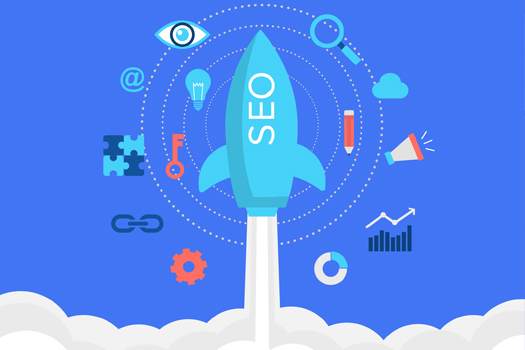The Role of UI/UX in Web Designing
Currently, UI and UX design have become essential in web design since every organization has an online platform. All these elements are important to produce aesthetically pleasing websites that are also effective and easy to navigate as well as being able to deliver business results. Below we get into specifics of the six most important aspects of why UI/UX design is so crucial for web design.
1. Enhancing User Engagement
Web traffic is the foundation of any site and it focuses on users. Incorporating a good UI/UX guarantees that the users search the site with ease and also have a good experience while using the site. Here’s how:
Intuitive Navigation: Users should be able to locate the items they are searching for without overthinking about them. No cluttered menus, a clear structure of the website’s sections, and appropriate usage of calls to action help with navigation.
Visual Appeal: Good looks attract the attention of the users and keep them engaged. The use of appropriate colors consistently, good quality images, and neat work make the eye-pleasing.
Interactive Elements: Interactive elements like hover effects, animations, and micro-interactions make the site look more engaging and invite the user to click and scroll more.
Responsive Design: Since a large number of users visit the sites through their smartphones, optimization is crucial. A responsive design makes it possible for the site to be optimized to operate on any device with proper display quality.
If the users can navigate through a website with ease and if the site’s content is interesting enough, the users are likely to spend more time on the website, interacting with the content as well as the features of the website hence increased engagement.
2. Improving Conversion Rates
Conversion rates are a direct quantifiable measure of the ability of a website to influence the user’s behavior in a specific way, for example, to make a purchase, subscribe to a newsletter, or fill in a form. UI/UX design plays a crucial role in optimizing these rates:
Clear Call-to-Actions (CTAs): Good usability also means placing CTAs, using power words placing them in the foreground, and making them visually stand out to help the user towards the intended action.
A/B Testing: Using A/B testing where designers create two different versions of a page, one can be able to see which of the two is most effective in increasing the conversion rate for instance by changing the color or position of a button. This research-oriented approach guarantees that the decision-making in design is efficient.
Trust Signals: Adding trust indicators such as secure payment symbols, feedback from other customers, and transparent privacy policies can help the user build confidence and make the transition to conversion.
A website with a high conversion rate means that the visits made by the users to the website generate tangible business results, the importance of UI/UX design.
3. Trust and Branding
Trust and loyalty are earned over time, and a well-designed website plays a significant role in this process:
Consistency Across Pages: When applied on all the pages, the fonts, colors, and layout used in the website contribute to the development of a unified brand image. This continuity helps the users to be convinced that they are still dealing with the same company they have trusted hence they can move from one part of the website to another with confidence.
Professional Appearance: A professional-looking design makes it look credible. Customers are more comfortable with a site that looks professional, up-to-date, and well-cared for.
Ease of Use: If a site is easy to navigate and the visitor has a good time then they are more likely to come back. In the process of using the site, the audience forms a preference for those sites that are capable of satisfying the need and providing comfortable navigation.
Personalization: The following is how the user experience can be personalized to increase user engagement: Offer customized.
recommendation: People like things to be tailored to their specific needs and wants, and by recommending to them what they are likely to like, the user will be encouraged to be more loyal to the application. When users sense that a site is familiar to them, then they are likely to come back often to that site.
User trust and customer loyalty are the things that are essential for long-term business success, and the UI/UX design plays an important role in building them.
4. Enhancing Accessibility
Accessibility is an essential aspect of modern web design, ensuring that websites are usable by everyone, including people with disabilities:
Inclusive Design: When it comes to designing the UI/UX of a product, the designer needs to pay attention to users who have different types of disabilities like the visually impaired, those with hearing losses, or those who have motor disabilities. This may include employing big fonts, clear color combinations, or offering the textual description of images and videos.
Keyboard Navigation: For the mobility impaired, all the links (like buttons and forms) must be operable by the keyboard and not only the mouse.
Screen Reader Compatibility: The designers should also consider the compatibility of their website with the screen readers that are used by visually impaired people.
Adhering to WCAG Standards: Some principles help to make Web Content more accessible and they are called Web Content.
Accessibility Guidelines (WCAG): Adhering to such principles assists in making a website legally compliant and accessible to a larger number of people.
It is not only a legal or moral responsibility; it is an opportunity for a larger audience to be able to use the website and be part of the community.
5. Boosting SEO Performance
This is because good UI/UX design is almost a partner to search engine optimization (SEO). While SEO typically focuses on keywords and backlinks, the user experience also plays a significant role in how search engines rank websites:
Page Load Speed: An easily accessible site is good for the user and is preferred by the search engine. Some of the methods include resizing images, reducing the amount of code, and using a cached browser are some of the strategies that can be employed to enhance the loading time.
Mobile Usability: Google and other search engines provide a high ranking for websites that are responsive or mobile-friendly. Responsive design should be adopted to make the site work well on mobile devices.
Lower Bounce Rates: If the website was designed to meet the user’s expectation of the website, then the bounce rates (where users leave the site quickly) would be low. A low bounce rate tells the search engines that the site gives useful information and this leads to improved rankings.
Structured Content: Subdivision of content into sections with appropriate titles is useful for both, the users and the search engines to comprehend the site’s structure. This is useful in enhancing the site’s ranking in the search engine results and enables the users to locate their preferred content effectively.
When a website offers a good user experience, the visitors are happy and this enhances the website’s ranking in the search engine; hence, more visitors.
6. Reducing Development Costs
Investing in UI/UX design early in the development process can lead to significant cost savings over time:
Identifying Issues Early: As such, wireframing and prototyping help the designers pinpoint issues before it is too late during the development process. This is a proactive measure that reduces changes that are likely to be made in the middle or after development has been completed.
User Testing: The best time to do the usability test is during the design phase so that the designer can be assured that the final product meets the intended use of the users thus minimizing future redesigning that may be costly.
Efficient Design Process: The design process that is usually organized and documented with the aid of relevant tools can therefore help save time and cost in the system.
Long-Term Value: This is proof that when one has developed a good website, then there is no need for one to constantly redesign the website frequently.
In the long run, effective UI/UX design results in to fast development process and product that addresses user needs hence reducing cost and improving ROI.
Conclusion
As the art of web design changes swiftly, UI and UX have become significant in the web design process. A captivating UI is a result of good design while a good UX guarantees a user has an excellent experience. In combination, they are the essential means of designing effective and engaging websites, resulting in the users’ interest, satisfaction, and, consequently, the business success. And the role of UI/UX in web design will only increase, as technology progresses, and defines how the interaction will look in the future.









